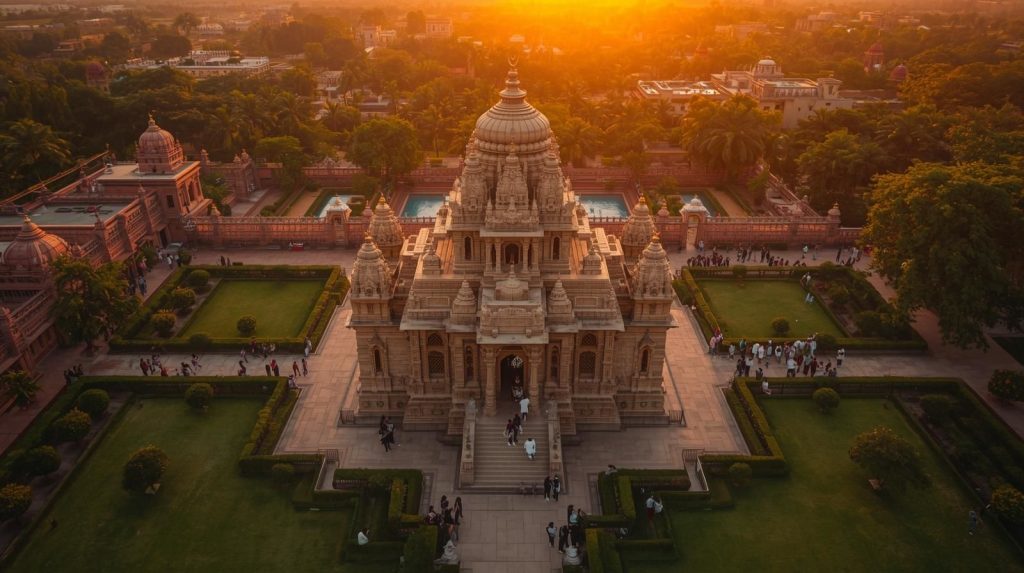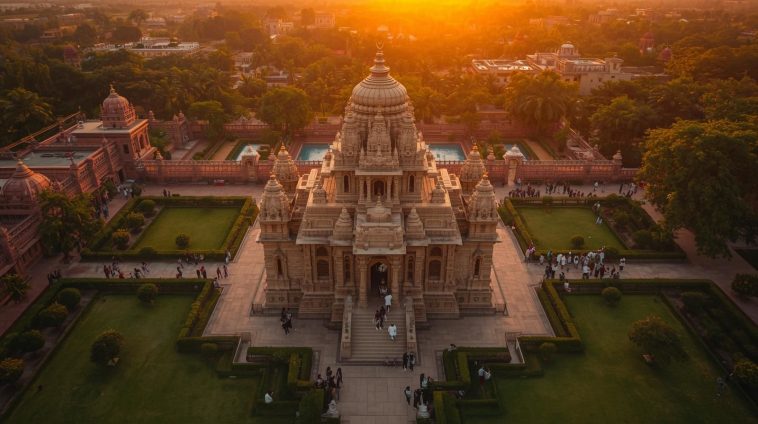The Ram Mandir in Ayodhya stands as a monumental testament to India’s rich cultural heritage and architectural brilliance.
Designed by the esteemed architect Chandrakant B. Sompura, this temple is not just a place of worship but a symbol of dedication, tradition, and the culmination of decades of perseverance.
Early Life and Legacy of Chandrakant B. Sompura
Born in Ahmedabad, Gujarat, Chandrakant Sompura hails from a distinguished lineage of temple architects.
His grandfather, Prabhashankar Sompura, was instrumental in the reconstruction of the Somnath Temple in 1949.
Continuing this legacy, Chandrakant has designed over 130 temples across India and abroad, including the renowned Akshardham Temple in Gandhinagar and the Swaminarayan Temple in Mumbai.
The Vision Behind the Ram Mandir
The journey to the Ram Mandir’s design began in 1989 when Chandrakant Sompura, with the assistance of his son Ashish, conceptualized the temple’s blueprint.
Despite lacking formal architectural training, Sompura’s deep-rooted understanding of traditional temple architecture enabled him to craft a design that harmoniously blends ancient techniques with modern engineering.
Architectural Design and Features
The Ram Mandir is constructed in the Nagara style, a traditional North Indian temple architecture characterized by its intricate carvings and towering spires. Key features include:
- Dimensions: The temple spans 380 feet in length, 280 feet in width, and rises to a height of 161 feet.
- Structure: It comprises three stories, each 20 feet high, supported by 392 pillars and 44 doors.
- Materials: Remarkably, the temple is built without the use of steel or iron, relying solely on sandstone and marble, which are believed to enhance the structure’s durability and aesthetic appeal.
This architectural marvel not only showcases India’s rich heritage but also exemplifies the meticulous craftsmanship of the Sompura family.
The Sompura Family: A Legacy of Temple Architecture
The Sompura family, spanning 15 generations, has been dedicated to temple architecture.
Their expertise is evident in over 200 temples across India, including significant structures like the Akshardham Temple and the Swaminarayan Temple.
Chandrakant’s sons, Ashish and Nikhil, have been actively involved in these projects, ensuring the continuity of this architectural legacy.
Recognition and Awards
In 2025, Chandrakant Sompura was honored with the Padma Shri, India’s fourth-highest civilian award, recognizing his exceptional contributions to temple architecture.
This accolade underscores the significance of his work and the impact of his designs on India’s cultural landscape.
The Ram Mandir’s Cultural and Religious Significance

Beyond its architectural grandeur, the Ram Mandir holds profound cultural and religious importance. It stands as a symbol of faith for millions of devotees and represents the culmination of a long-standing aspiration to honor Lord Ram’s birthplace.
The temple’s construction, rooted in traditional craftsmanship, serves as a beacon of India’s commitment to preserving its spiritual heritage.
Conclusion
Chandrakant B. Sompura’s design of the Ram Mandir in Ayodhya is a harmonious blend of tradition, devotion, and architectural excellence.
His work not only honors the legacy of his ancestors but also contributes to the rich tapestry of India’s cultural and spiritual heritage.
The Ram Mandir stands as a testament to the Sompura family’s enduring dedication to temple architecture and their pivotal role in shaping India’s architectural landscape.
FAQs
Q1: Who is the architect of the Ram Mandir in Ayodhya?
A1: The Ram Mandir was designed by Chandrakant B. Sompura, a renowned temple architect from Ahmedabad, Gujarat.
Q2: What is the architectural style of the Ram Mandir?
A2: The temple is constructed in the Nagara style, a traditional North Indian temple architecture known for its intricate carvings and towering spires.
Q3: How many temples has the Sompura family designed?
A3: The Sompura family has designed over 200 temples across India, continuing a legacy of 15 generations in temple architecture.
Q4: What materials were used in the construction of the Ram Mandir?
A4: The temple is built using sandstone and marble, notably without the use of steel or iron, which is believed to enhance its durability and aesthetic appeal.
Q5: What recognition has Chandrakant Sompura received for his work?
A5: In 2025, Chandrakant Sompura was awarded the Padma Shri, India’s fourth-highest civilian award, for his exceptional contributions to temple architecture


